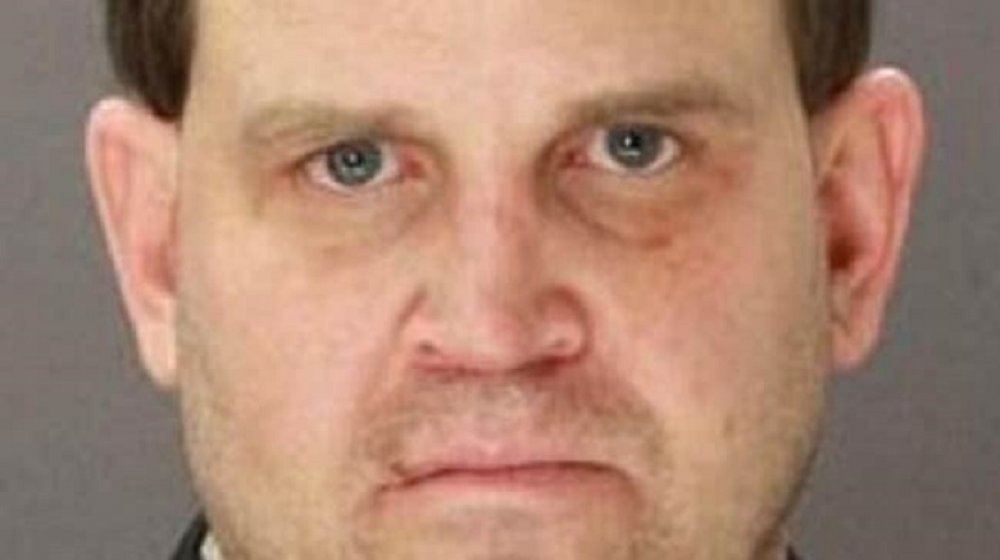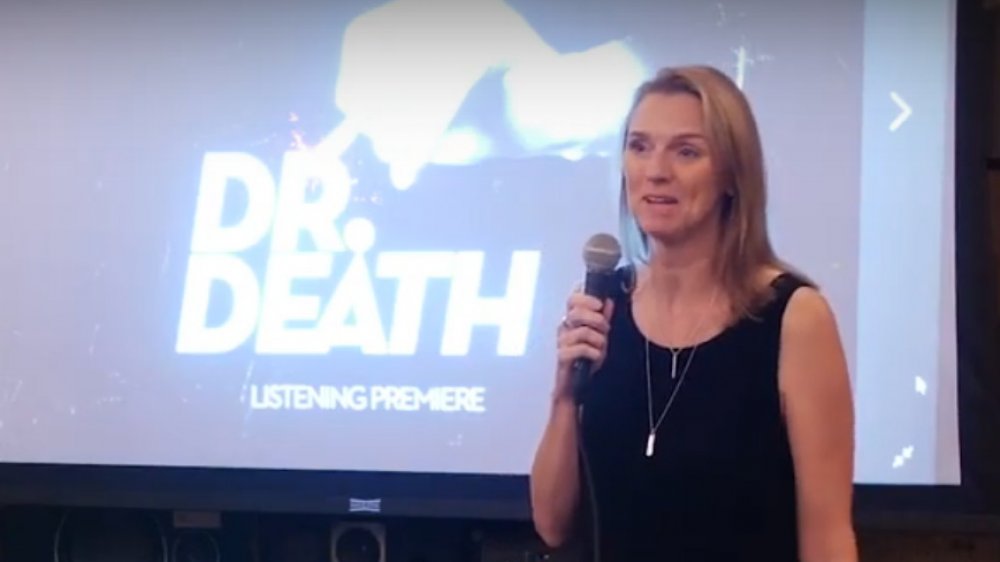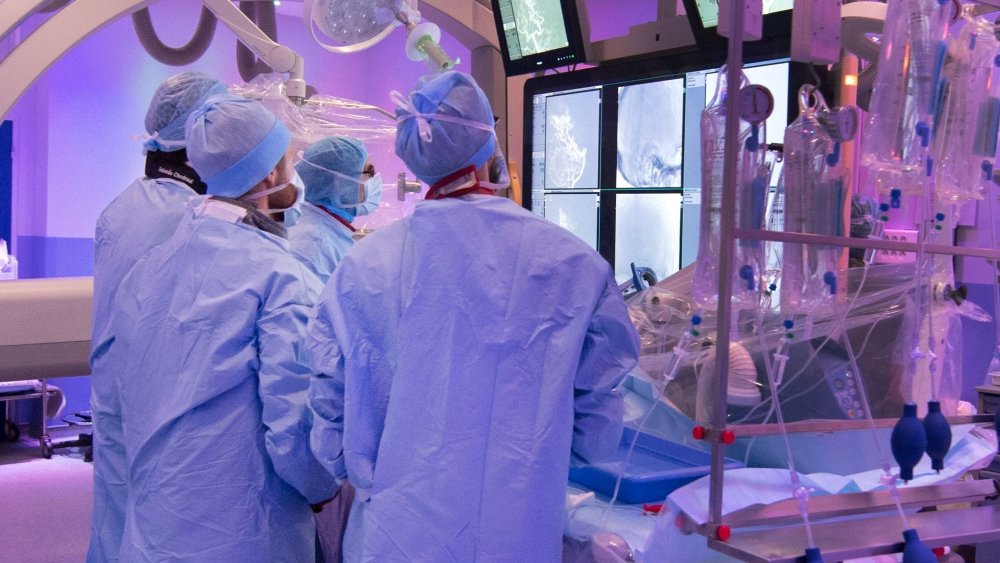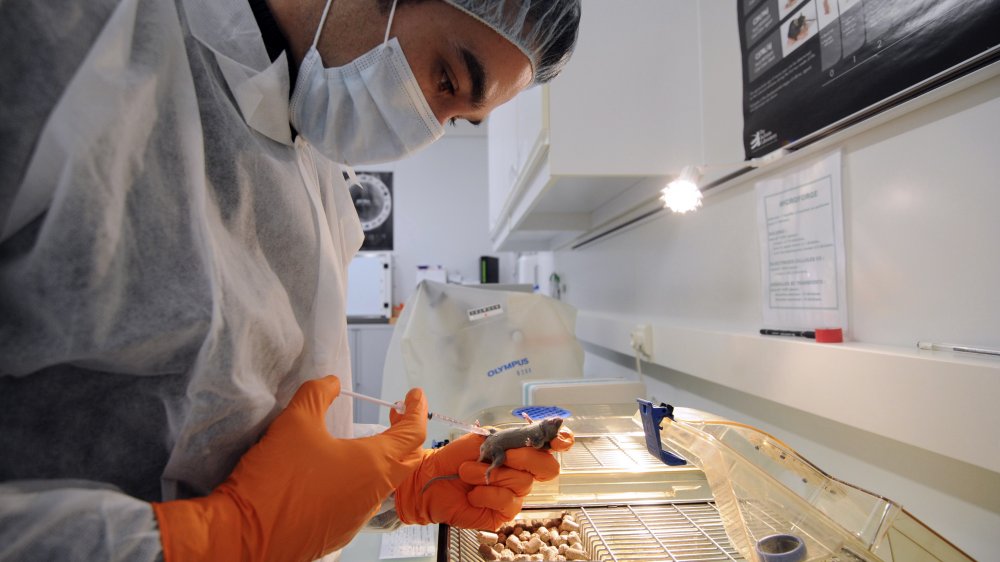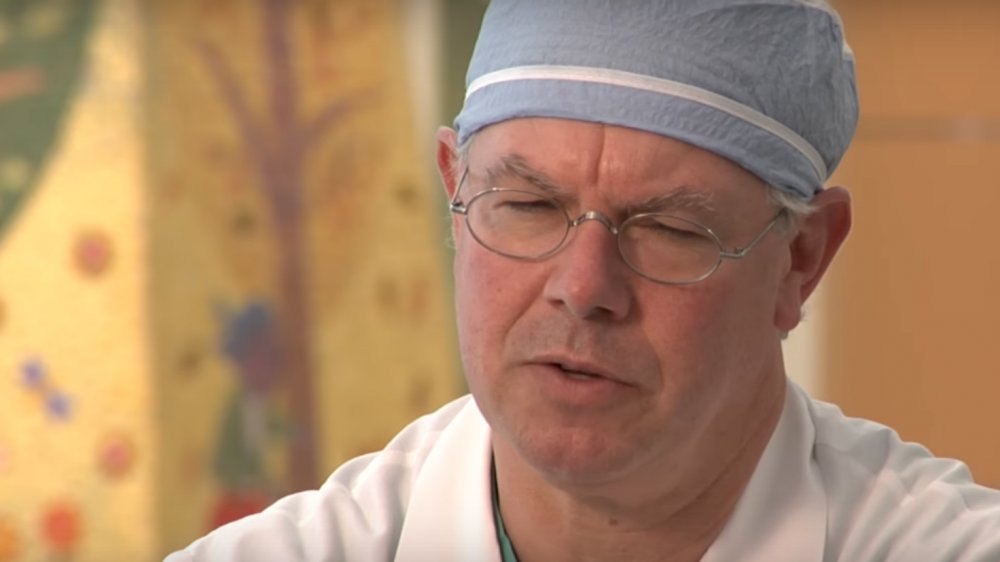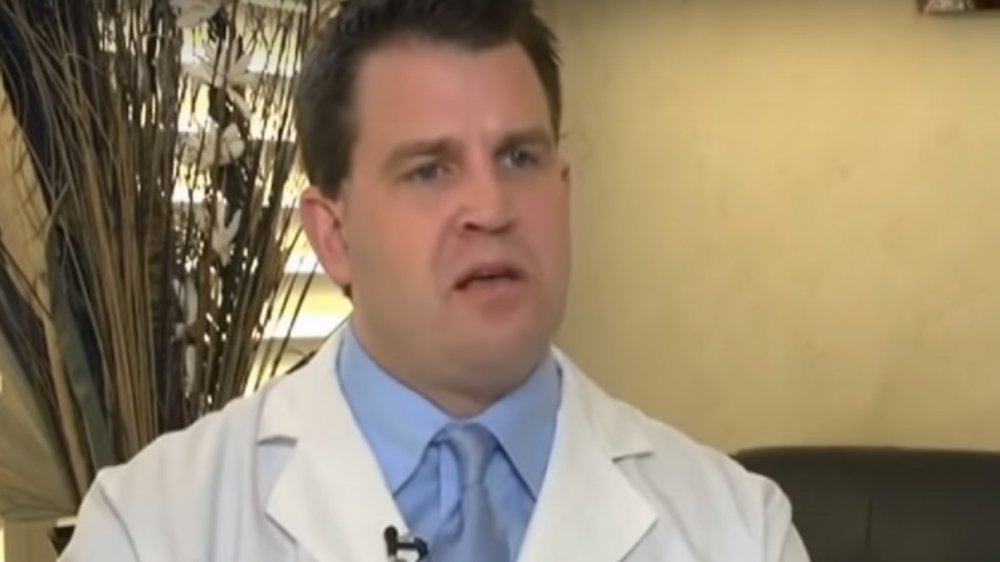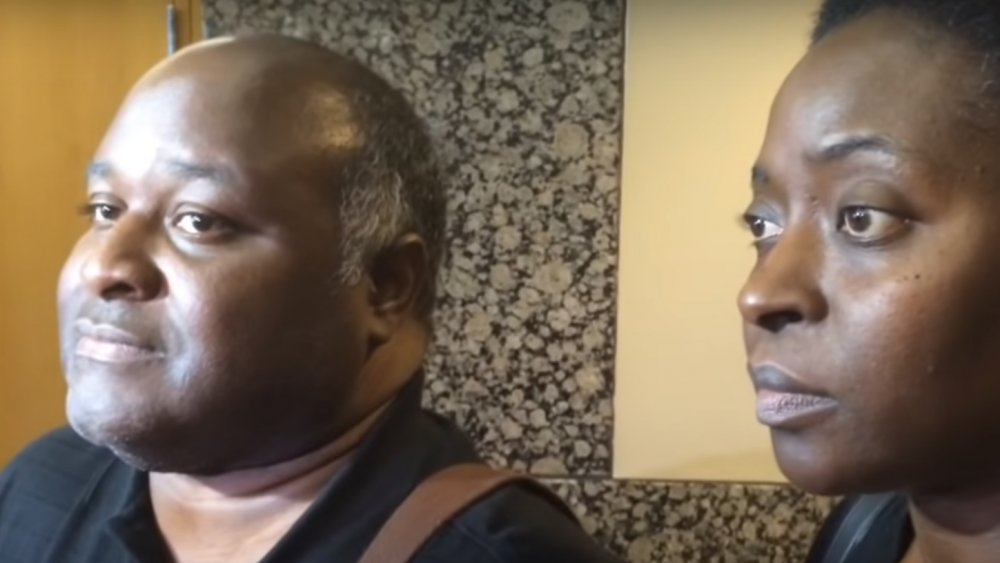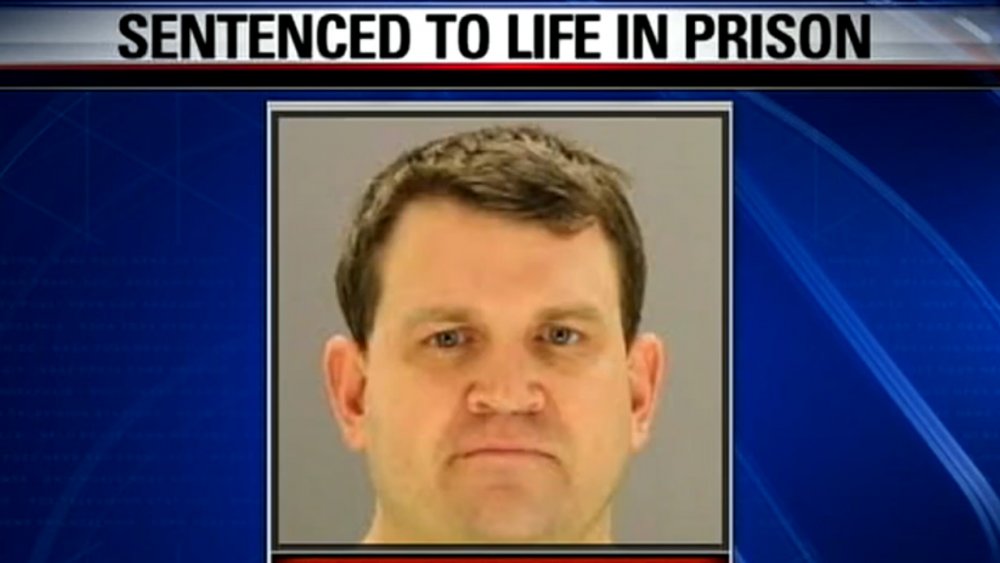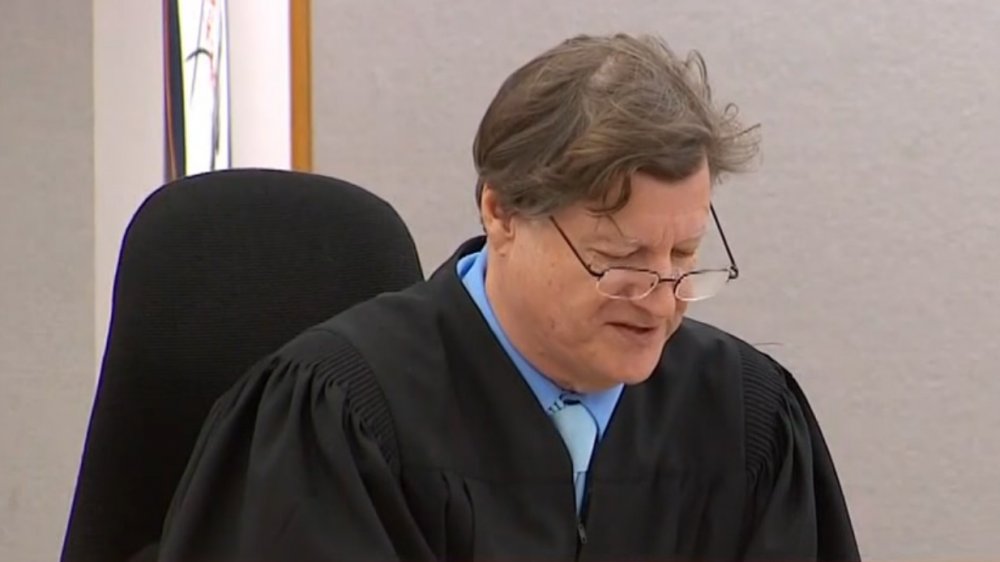The Untold Truth Of Dr. Death
The Hippocratic Oath is sworn by all doctors and binds them to do no harm. And of course, there are many in the medical field who go above and beyond the call of duty. But as the ultimate betrayal, some doctors violate this code of conduct in the worst possible ways. These medical professionals do irreparable harm to their patients. Dubbed angels of death, they leave a trail of damage and loss for many reasons: human fallibility, malaise, or malice.
Take the case of Dr. Death, aka Dr. Christopher Duntsch. What made this well-recommended neurosurgeon harm his patients and himself? What made him cause damage, trauma and even death to his patients? From the top of his class to life in prison: things did not go as he planned.
Duntsch was described as a precocious boy and a bright student. After graduating as a physician with above-average grades, he had his whole life ahead of him. Duntsch could have turned it into something good and meaningful. Yet, instead of saving lives and using his knowledge for good, the opposite happened. He harmed the very people who trusted him. 33 of his 37 surgeries were botched, with two dead and 31 injured for life. Let's delve into what made him tick, and how the medical community failed the victims of Dr. Christopher Daniel Duntsch.
The chillingly creepy Dr. Death podcast
There's so much news out there, headlines can slip through the cracks. When the story about Christopher Duntsch finally broke, it affected his patients, or rather, his victims, but many people missed it. The world at large may have never heard of Dr. Death but for Laura Beil. A veteran investigative reporter in the medical field, her voice enthralls. "You don't know this yet, but you will never walk again. And you are one of the lucky ones." Beil's somber reporting on the Wondery podcast titled Dr. Death will send chills down your spine.
It's thrilling if uncomfortable to listen. Unlike a TV series where you get to see the character, a podcast is darker. There is no face to the monster you are hearing about, the one destroying lives. He promises to take all pain and suffering away. In reality, he makes everything so, so much worse. The damage is irreversible. And when this podcast tells you all the gory details, you become that patient. Their suffering becomes yours. GQ calls it the scariest podcast of 2019. The monster in the white coat is all too real.
The real question isn't why Dr. Duntsch did what he did. The real question is: Why couldn't anyone stop him in time? And what stops another physician from turning into the next Dr. Death?
Who was Dr. Death?
What turned Dr. Christopher Duntsch into Dr. Death? His childhood was seemingly great. He grew up in a middle-class suburb with a teacher mom and a missionary/physical therapist dad. As the eldest of four, his parents remember him as a precocious boy. After his arrest, he still had those loving parents. According to an article by WFAA, Christopher Duntsch's father Don stated his son had called him, completely beside himself, when he botched several surgeries. Don tried to convince the jury that his son cared for his patients. The evidence said otherwise.
According to Dallas Magazine, Dr. Christopher Duntsch talked a big game. To fellow surgeon Mark Hoyle, he said, "Everybody's doing it wrong. I'm the only clean minimally invasive guy in the whole state." A bold pronouncement, yet after just one sloppy, dangerous surgery, Hoyle vowed never to work with Duntsch again. Through his career, reports of him doing rounds under the influence were commonplace. The University of Tennessee refused to comment on grounds of confidentiality, but neurosurgeon Dr. Frederick Boop, under whom Duntsch completed his residency, knew. According to ProPublica, Boop was aware of a complaint Duntsch used drugs before seeing patients. Duntsch was told to take a drug test but disappeared instead. When he finally turned up again, he was made to attended a program for impaired physicians.
All Duntsch got was a slap on the wrist while his blood-soaked foray into the OR continued.
The cracks began to appear
Duntsch did his surgical residency at The University of Tennessee. In 2005, partway through the six-year program, he became the director of the tissue bank. Dallas Magazine states that Duntsch became key in supplying samples to scientists for research. He wrote grants and secured more than $3 million in funding. This was the time when Dr. Christopher Duntsch started to turn into Dr. Death. The seeds of greed were sown.
The next year, in 2006, Duntsch became more money-minded. A husband and wife pair of Russian stem cell scientists, Valery Kukekov and Tatyana Ignatova entered the picture. They had discovered stem cells in human brain tumors. This could be path-breaking in the future of cancer treatment and Dr. Duntsch sniffed out the opportunity right away. With Ignatova and Kukekov in tow, he filed patents under a company he founded. The company, Discgenics, is still going, and still holds the patents, listing Duntsch, Ignatova, and Kukekov as the inventors. And yet, the names of the latter are incorrect and misspelled. Ignatova believes this to be deliberate. This way, no one recognizes them as the inventors.
Was he was only in it for the research prestige and the money? There are some who believe that he never wanted to be in the OR at all.
Did Dr. Death even want to become a neurosurgeon?
Dr. Death might not have cared about being a surgeon, just the prestige that came with it. The Accreditation Council of Graduate Medical Education has strict rules about residency programs. Neurosurgeon residents need to complete 1,000 surgeries as training requirements. The evidence collected by the DA's office by subpoenaing every hospital on his CV shows Duntsch completes a fraction of these. According to ProPublica, Duntsch's residency and fellowship records show less than 100 surgeries.
And there were plenty of other signs as well. One of the early investors in Duntsch's company Discgenics was Dr. Rand Page. Duntsch's initial presentation bowled him over. Soon though, red flags began to pop up. At morning meetings, Page would see Duntsch mixing a vodka orange. If that weren't enough, Page once happened across a drawer at Duntsch's house. In it, was a mirror with cocaine and a rolled-up dollar bill on top.
With such goings-on, Duntsch got himself kicked out of his own company. His investors took him to court. Currently, Discgenics has no mention of Duntsch at all, his history with the company, or that he's the massive elephant in the room. The original patent still holds, and hopefully, Discgenics would be able to break out of the Dr. Death shadow to do some real anti-cancer work instead.
Dr. Death always came highly recommended
You'd think that a surgeon who was this bad would have some mud spattered on him on the internet. No such thing. At Health Grades Duntsch had 4.3 out of 5 stars, "above [the] national average." And professional marketing videos got him ready and willing patients.
Surprisingly, his superiors at The University of Tennessee also gave him glowing reviews. This despite the drug problems as well as incomplete residency training. One such recommendation came from the surgeon under whom Duntsch completed his residency, Dr. Frederick Boop. He wrote, "You will not find a harder working or more willing individual." Strangely enough, Dr. Boop also mentioned, "I have not operated with Chris." This is notably weird, considering Christopher Duntsch trained under Dr. Boop, so you'd assume that they operated together as part of the whole learning surgery process.
While applying to Baylor Regional Medical Center in Plano, TX, Duntsch also provided Dr. Jon Robertson as a reference. Like Boop, Dr. Robertson also gave Duntsch a great review. According to him, Duntsch had a "great work ethic" and no areas of weakness. Was this a way of keeping the University of Tennessee's ranking up? Did these doctors truly not see though Duntsch? Or was Duntsch just good at hiding his true self?
Hospitals knew of Dr. Death's ways but let him off the hook
According to Dallas Magazine, a woman named Megan Kane remembered how Duntsch partied with her on his birthday. At the time, Kane was dating Jerry Summer, a childhood friend of Duntsch. This very friend would later end up a quadriplegic under Duntsch's weapon of a scalpel.
Kane came into the picture as a deposition witness. Attorney James Girards was representing Lee Passmore, one of Duntsch's victims and reached out to her. In the deposition, she states that Duntsch snorted cocaine from a handy pile he kept on a dresser at his home. Then he also took prescription painkillers and ate a paper blotter of LSD. After this late-night party, Duntsch went to work the next morning. He wasn't concerned about the drugs in his system while he did his rounds. Such behavior did not go unnoticed by the other doctors. In an article in Texas Observer, author Saul Elbein says that one of the doctors he spoke to likened Duntsch to Hannibal Lecter three times in eight minutes.
So the hospitals he worked for knew of his carelessness and sociopathic behavior in the OR. Yet they let him resign and passed the bill along for someone else to pay. Unfortunately, it became the patients' burden to bear.
Dr. Death's story was full of holes, but no one saw the truth
Duntsch's resume shows a doctorate in microbiology from the St. Jude Children's Research Hospital. St. Jude refuted this by saying there was no such program there at that time. To add to this, his so-called Ph.D. at the University of Tennessee Health Science Center may also be dubious. While the school refused to verify or deny his claims, he wasn't in any of the yearbooks of that time.
Even the hospitals that he worked for kept enabling him, according to a report by the Dallas County prosecutors. At The University of Tennessee, his supervisors were also investors in Duntsch's company, Discgenics. Because of a valuable patent the company owned, they let him through the gates and out into the world. At Baylor Regional Medical Center, after botched surgeries and complaints from fellow doctors, Duntsch resigned. The hospital saved face and avoided any lawsuits. It was the same with Dallas Medical Center where he did not face any action. In fact, he went on to work at two more hospitals.
Finally, it was the Texas Medical Board (TMB) that acted too late, too little. According to the prosecutors, TMB had many complaints on file. And this was 10 months before Duntsch's last surgery. This led to another 20 patients suffering. Seven more doctors voiced complaints before TMB finally canceled Dr. Death's license.
Dr. Death's operating room of terror left two dead and 31 injured
The Texas DA chose six patients to make their case to the jury: Lee Passmore, Barry Morguloff, Jerry Summers, Kellie Martin, Floella Brown, and Mary Efurd. Unfortunately, Martin and Brown were not alive to tell their tale. At Baylor Regional Medical Center, during a simple laminectomy, Duntsch slashed one of Martin's major arteries but refused to admit his mistake. Since no one else knew what was wrong, they couldn't save her. Martin paid with her life because her doctor was too proud to say he screwed up. Baylor asked him to resign immediately.
Duntsch then joined Dallas Medical Center. His next patient, Floella Brown was 63. Duntsch ended up slicing her vertebral artery, stopping blood and oxygen flow to her brain. Again, he never revealed what went wrong to the other staff. Due to his actions, Brown suffered a stroke that night, but Duntsch didn't responded to hospital pages. When he finally came to the hospital, he busied himself with another patient, also on the DA's list, Mary Efurd. She, after being in Duntsch's OR, would never walk again. Meanwhile, Brown went brain dead and passed away.
Jerry Summers, Duntsch's childhood friend, is now a quadriplegic. The other survivors suffered damage, disability, and excruciating pain. When the Texas Medical Board revoked his license, Duntsch's reign of surgical terror had run its course. 33 of his surgeries went horribly wrong. There are 31 people left alive today, irreparably damaged by Dr. Death's grievous malpractices.
Dr. Death became the first surgeon to go to prison for botched surgeries
The 31 people who survived Dr. Duntsch's scalpel face a struggle for the rest of their lives. Many shake and tremble, some have unimaginable pain. And yet the actual tragedy is that someone could have stopped it. The very first complaint should have triggered an investigation. But hospital after hospital passed the buck. It took the Texas Medical Board one whole year to investigate and finally revoke Duntsch's license. Meanwhile, his patients kept suffering, and dying, in his OR.
When Mary Efurd could no longer walk, Dallas Medical Center called in Dr. Henderson to salvage the botched surgery. Henderson actually checked if Duntsch was a real doctor with The University of Tennessee, appalled at the damage to Efurd's spine. The fault also lies with the Texas law. Hospitals are liable only if the plaintiff can prove that the hospital was also malicious, that it knew of the risk and ignored it. But the same law also helps these very hospitals in keeping doctor credentials confidential.
The Dallas County DA, along with fighting against these very laws, was also running out of time. The statute of limitations made them base their case on only six victims. That said; the 12 jurors did what the Texas Medical Board should have done. They listened, judged and found Duntsch guilty, and sentenced him to life in prison, reports USA Today.
An e-mail proves Dr. Death was no innocent man
Many of Duntsch's patient-turned-victims filed malpractice suits, according to Dallas News. Some never went to trial and had out-of-court settlements. The civil attorneys in these cases were able to land a rather damning e-mail sent from Duntsch to his girlfriend/physical assistant.The girlfriend was Kimberly Morgan, and in the e-mail to her, the ramblings of a mind gone wrong are clear. Duntsch wrote that he accepted he was a cold-blooded killer. He said, "What I am being is what I am, one of kind, a mother f****r stone cold killer that can buy or own or steal or ruin or build whatever he wants."
Now keep in mind, Morgan herself was at the wrong end of some of these suits. The attorneys claimed she knew about the drugs and his drug-addled OR trips but did nothing to stop them. For the DA though she proved to be a good witness. She was deposed over Skype since, at the time, she was stationed with the Air Force in the Middle East.
To say that this e-mail proved that Duntsch was not fit to be a doctor would be completely correct. While some called his eventual downfall greed-related, who knows what evil the human mind is capable of.
The ultimate downfall of Dr. Death
Saul Elbein writes in the Texas Observer that Dr. Henderson sent him a recording of his complaint to the Texas Medical Board. In it, he is yelling at Maria Lopez, the medical board investigator assigned to Duntsch's case in January 2013, demanding to know why he was still practicing. Lopez answers Henderson's frustration in a somber tone, saying that while you may know a doctor is bad, gathering evidence takes time.
Duntsch's license was finally revoked in June 2013, after he had killed two patients and maimed 31 others. His license gone, Duntsch went off the rails. A string of arrests for DWI, shoplifting, and more followed. By this time his wife and he had separated and he also filed for bankruptcy.
In July 2015, indictments came through. Duntsch landed in jail on a $600,000 bond and waited for the trial to begin. Toby Shook, a Dallas defense attorney, gave a statement to Dallas Magazine: "I cannot recall a physician being indicted for aggravated assault for acts committed during surgery. And not just Dallas County, I don't recall hearing about it anywhere." The life in prison sentence was a deathblow to Duntsch, who, according to his father, was now a humbled man who had lost everything. According to his lawyer, Duntsch was a scapegoat. But for his victims, the judgment was a big relief.
From 50 Shades of Grey to Dr. Death
Becker's Hospital Review covered the 13 worst physicians of 2017, as named by Medscape. Dr. Duntsch is at number one. But that isn't the scariest part. What is scarier are the 12 names that follow his. To be a good doctor, you have to be a good human being. Or at least a morally upright one. Sadly, being moral and good aren't the requisites schools need to let someone become a doctor. Whatever Duntsch set out to be when he first donned that white coat, being a media sensation for all the wrong reasons may not have been his goal. But the media definitely played its part sending Dr. Death where he rightfully belongs, life in prison. And scary as it may seem, it's only when we listen to podcasts like these, do we realize the reality of medical horror stories.
Dr. Death is now also going to be a TV show with Christian Slater and Alec Baldwin playing main roles. Slater plays Dr. Randall Kirby while Baldwin is Dr. Robert Henderson. And who will Dr. Death be? The good-looking but eerie Jamie Dornan. If he could do 50 Shades of Grey and some scandalous modeling, playing a menacing Dr. Death should be a piece of cake, right?
The real question is: Can this TV show bring about a change in medical law, or how hospitals treat their patients and doctors? Will it help patients protect their rights? Only time will tell...
